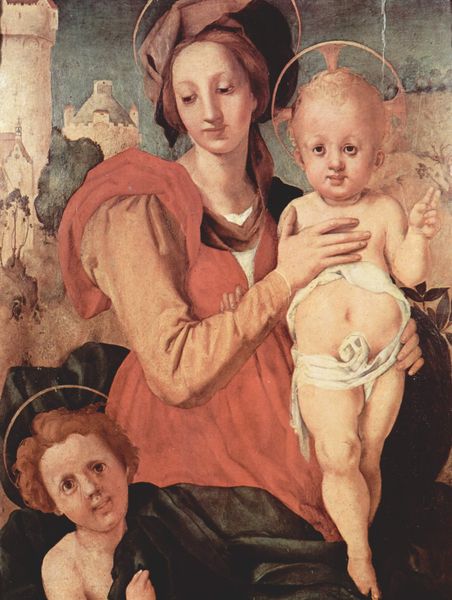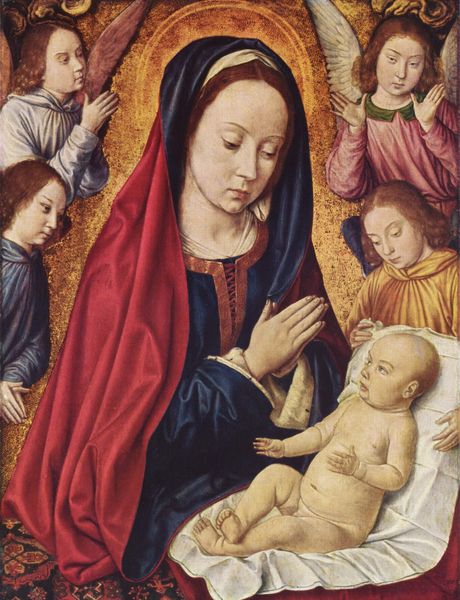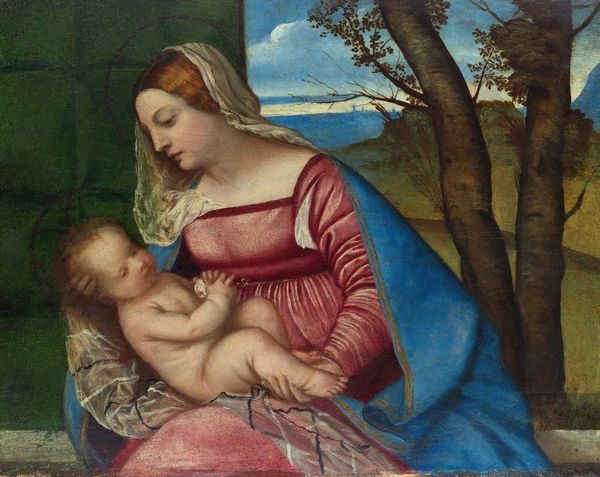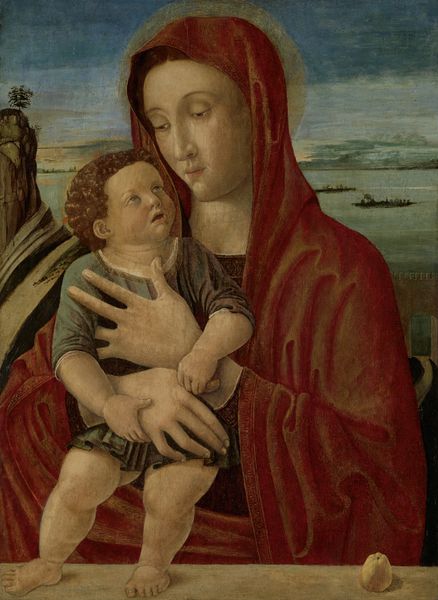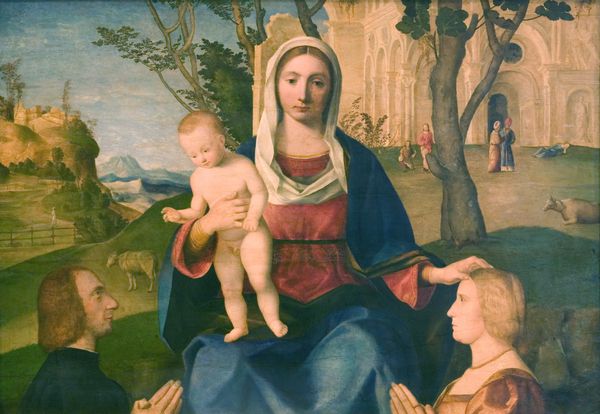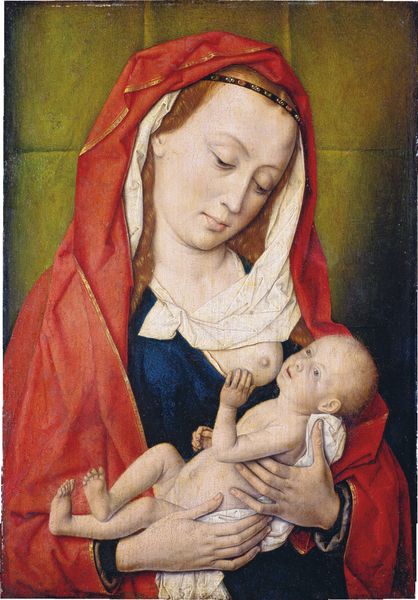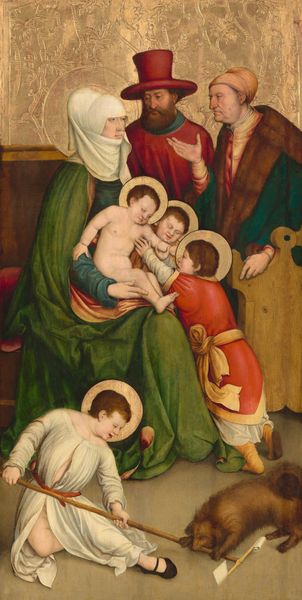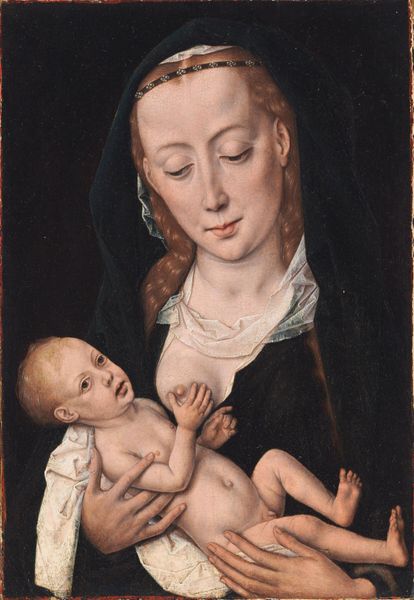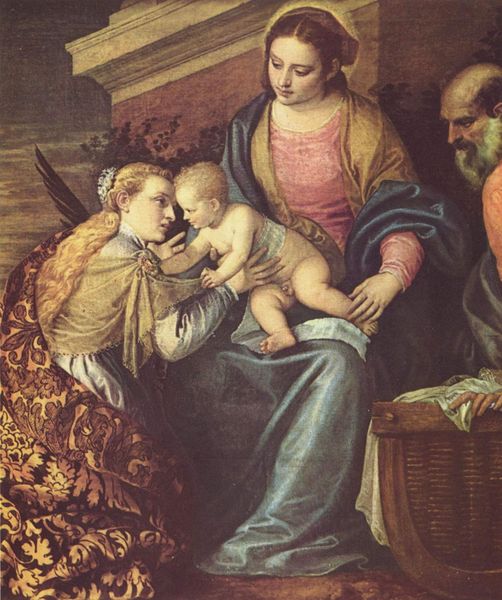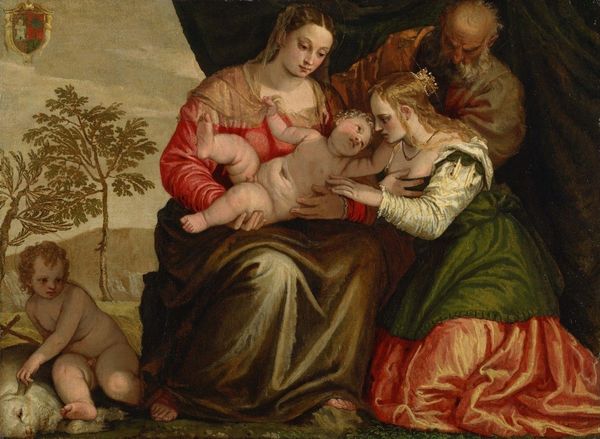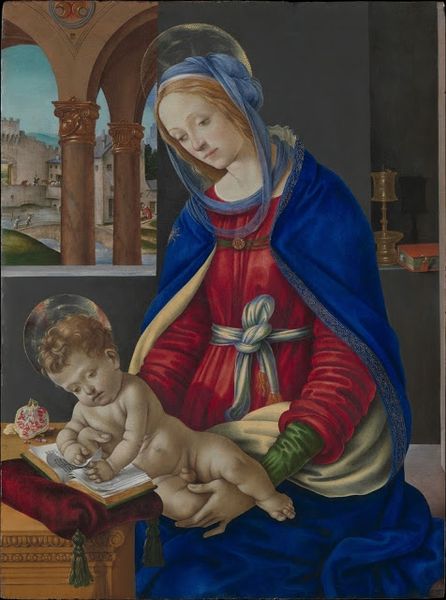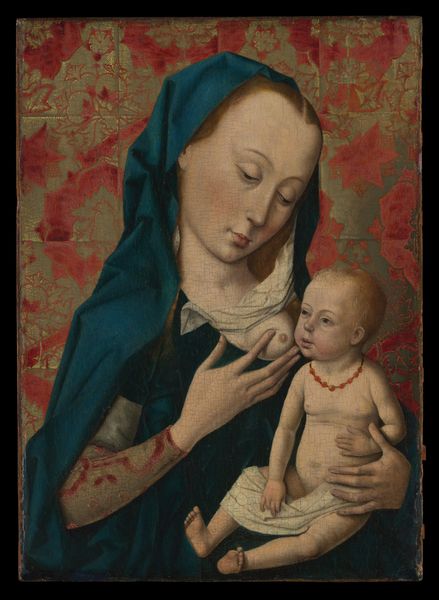
Dresden Altarpiece, overall view 1496
0:00
0:00
albrechtdurer
Gemäldegalerie Alte Meister, Dresden, Germany
Copyright: Public domain
Curator: Here we have Albrecht Dürer's "Dresden Altarpiece," created around 1496. It's a stunning example of Early Renaissance art now residing in the Gemäldegalerie Alte Meister in Dresden. Editor: It strikes me immediately with its compartmentalized nature. Three distinct panels, each teeming with figures, yet feeling oddly isolated from one another through color and depth. Curator: Precisely. Each panel tells its own part of the larger narrative. The left shows Saint Paul, the center the Virgin and Child, and the right depicts Saint Anthony. Each were incredibly important and powerful figures during the creation of this piece. It highlights their importance within the larger society of the era. Editor: Observe the composition within each panel. Saint Paul, framed by swirling angels, sits rigidly, dominated by deep blues, while Saint Anthony is almost skeletal against his heavenly background of roseate cherubs. There is such a stark contrast. Curator: And let’s consider its role. Altarpieces were more than mere decoration; they were integral to religious practice and were used within the Church to project authority and instill devotion. This altarpiece likely adorned a significant church, serving as a focal point for worship. Editor: I notice the symbolism imbued into everything from a halo hovering in one pane to the color choice. Each color plays with space, depth, and importance to highlight the core figures. The symmetry creates an appealing harmony between them that allows a visual storytelling to occur. Curator: Dürer was masterful at navigating the political and religious sensitivities of his time, and "Dresden Altarpiece" is no exception. It spoke to both the elite and the common person in a way that reinforced societal structures and values. The careful use of perspective and space also adds layers of understanding and draws one's eyes across each segment for understanding. Editor: The texture achieved through tempera and oil is astonishing. Up close, one can appreciate Dürer's skillful manipulation of light and shadow and one will notice he also takes liberties when portraying religious figures such as cherubs or children making their shapes almost human, yet slightly uncanny, for visual tension. Curator: Examining art within its historical and cultural context provides insight into the motivations of both artist and patron. The Altarpiece offered not just religious guidance, but also reaffirmed social standings of the city of Dresden. Editor: It offers more depth to appreciate the way he employed material choices and artistic decisions to bring deeper thematic considerations into the finished work. Curator: Exactly, and combined those observations illuminate the complex narrative woven within Dürer's work, don’t you think? Editor: Yes, it provides clarity.
Comments
No comments
Be the first to comment and join the conversation on the ultimate creative platform.
